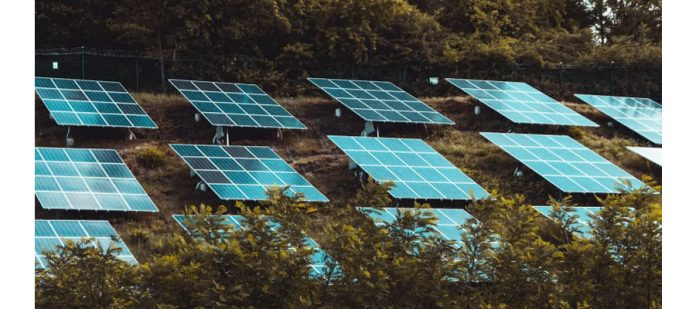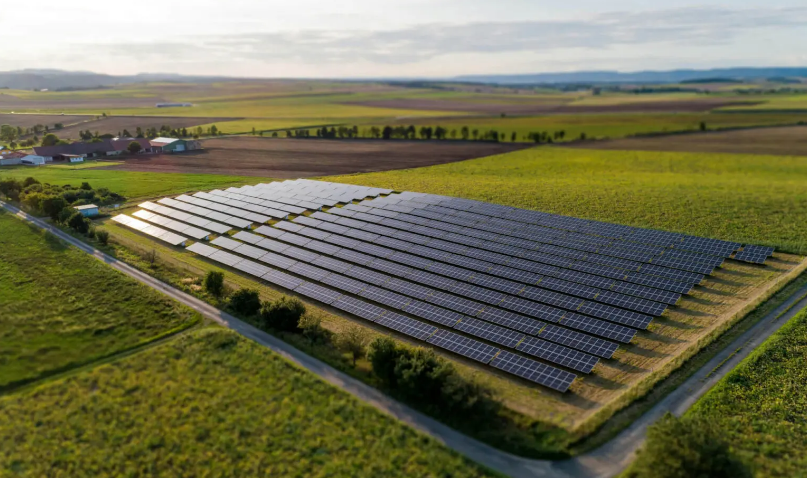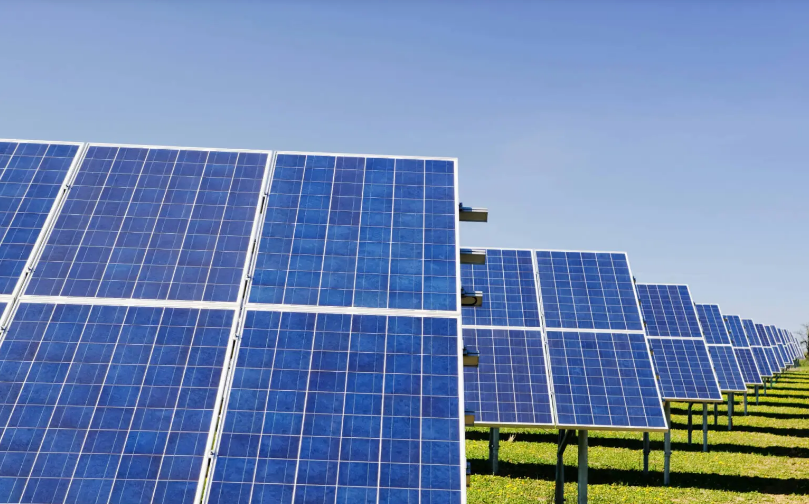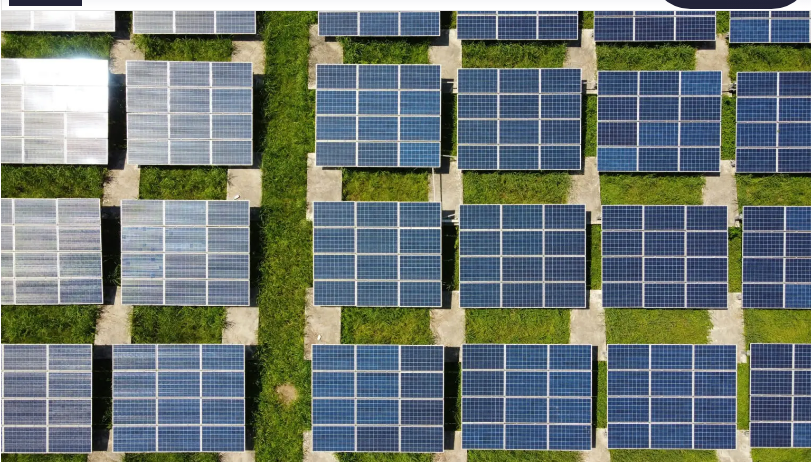A stereotype plagues farmer. They have antiquated technology, with giant tractors rusting in open fields. They may have harvesters and irrigation systems, but the world of smart technology and advanced machinery is out of the hands of most. While this is a somewhat untrue generalization, there are technologies empowering farmers to undergo digital transformation with sustainability in mind. Agrivoltaics might be the window into a new era for worldwide farming. How?
What Are Agrivoltaics?
Agrivoltaics is the practice of blending solar power generation with agriculture. So, are all farms with solar panels embracing Agrivoltaics? Not necessarily. Whereas some farmers may have rooftop panels on barns or homesteads, this does not directly impact the crops’ or soil’s well-being and health.
Agrivoltaics takes a more comprehensive approach by trying to make solar panels work for the farm, enhancing productivity, mending soil health, increasing yields and promoting sustainability instead of merely harnessing green power. How? Smart placement of panels throughout the land increases shading opportunities, maintains moisture levels and invites pollinators. These are all boons for farm management and biodiversity. This applies to ranching as well.
Delays in digital transformation surface from the agricultural industry’s reluctance and distrust of novel tech. Solar providers must prove to them how integrating arrays with agriculture provides more advantages that benefit the individual farmer or company and enhance the global perception and efficiency of agriculture as a whole.
It is becoming increasingly easier to convince stubborn, tenured agriculturalists because of federal incentives and the normalization of net metering. The cultural shift is more important than ever as carbon emissions from ranching and agriculture continue to rise.
Exploitative methodologies run rampant as farmers receive pressure to meet the demands of a growing population. Workforces have to operate fast, sometimes compromising the Earth’s health. Agrivoltaics can rewrite this narrative for greener practices and better output.
What Are the Advantages for Farmers?
Agrivoltaics provide countless benefits outside of providing green energy. How do they foster healthy plants and business resilience?
Increasing Bottom Lines and Business Longevity
Solar panels create financial stability in several ways. The most obvious is by increasing yields and boosting profits. The higher-quality crops will increase patronage and customer satisfaction, increasing the likelihood of repeat customers. Additionally, there will be lower operations costs because energy independence reduces or eliminates electricity bills. The shade also saves on water, lowering this bill as well.
These extra funds can go into savings or invest in more technologies to increase productivity and enhance agriculture. Analyses prove the return on investment for using agrivoltaics pays for itself in time.
Encourages Co-Ops and Partnerships
Agrivoltaic operations invite farmers to share land to mutually benefit from the advantages of crops and side hustles like net metering. Sometimes, collaborations are necessary to fund and catalyze one of these somewhat expensive projects, developing deeper ties within the agricultural community.
Improves Environmental Conditions
Modern agriculture is stripping the soil of its nutrients. Mass production practices also emit more chemicals and pollutants, tainting waterways and the air. The footprint of agriculture is one of the most notable on the planet. For an industry reliant upon nature’s health, it is contradictory for conditions to be the way they are. Farmers must embrace Agrivoltaics to assist in getting habitats and biodiversity back to normal. It will have these benefits:
- Bringing back native flora and fauna.
- Attracting pollinators.
- Eliminating reliance on pesticides.
- Preventing invasive species.
- Reducing the chance of blights.
Promotes Renewable Adoption and Digital Literacy
Though agriculture is one of the sectors that could benefit most from technology — or agtech — workers are hesitant and disenchanted by the idea. Agrivoltaics could be the asset that transforms mindsets into more willing to engage with digital products and develop tech literacy. Tech distrust is a primary reason behind the skepticism, but not all will incite toxic side effects onto a farm.
Solar panels might be the pathway to proving not all electronics have a destructive impact on nature, leading to more productive tech inclusions on farms worldwide. Internet of Things monitors, digitized livestock protection and automation will empower workers while solidifying bottom lines. Rural regions and sectors are a vast portion of the digital divide, and this day and age cannot afford to keep it gaping for too much longer.
Encourages Water Awareness and Soil Restoration
Endless acres of crops are not meant to have direct exposure to sunlight. The heat evaporates the water irrigation systems and sprinklers spend so much time and energy spreading around the land. How can you maximize the effort you put into irrigation?
Solar panels provide shade to farmland, allowing water to dig deeper into the soil and provide more benefits to plant growth. Solar panels also protect crops from being uprooted by wind or eaten by as many hungry animals as possible. The physical barrier deters animals and breaks gusts to keep everything grounded.
What Are Advancements in Agrivoltaics?
The advancements of Agrivoltaics go outside of agriculture into green cities. How do they assist with expansion? Shenzhen, China, believes they could produce an entire year’s worth of lettuce with this technology. It amplifies green rooftop expansion and urban greenery for community gardens and food equality. This is only one small example of how advancements in agrivoltaics improve the quality of living, reduce food scarcity, and advance climate objectives.
Another advancement is concentrator photovoltaics in agrivoltaics. This leverages parabolic glasses and layered films to reflect near-infrared radiation alongside other technologies to make power generation more efficient and compatible with photosynthetic habits. It catalyzes mechanical improvements for agrivoltaics in these areas:
- Shading management
- Spectral distribution
- Intensity adjustment
However, one of the best ways people can advance the field is by finding how different crops, flowers and other vegetation uniquely interact with solar panels. The more curated agrivoltaics can get with varied geographies and native plants, the better it can serve farmers to expedite the yields and health of their specific crops.
A Future with Agrivoltaics
Solar panels on farms introduce new verticals to stagnant farm operations. It increases revenue, crop yields and environmental health while giving agriculturalists a prime opportunity to embrace modern tech. The larger corporations and small farmers discover the benefits of agrivoltaics, the better the world will be in decarbonizing the sector.




